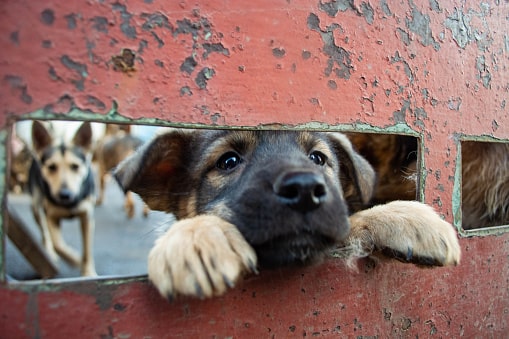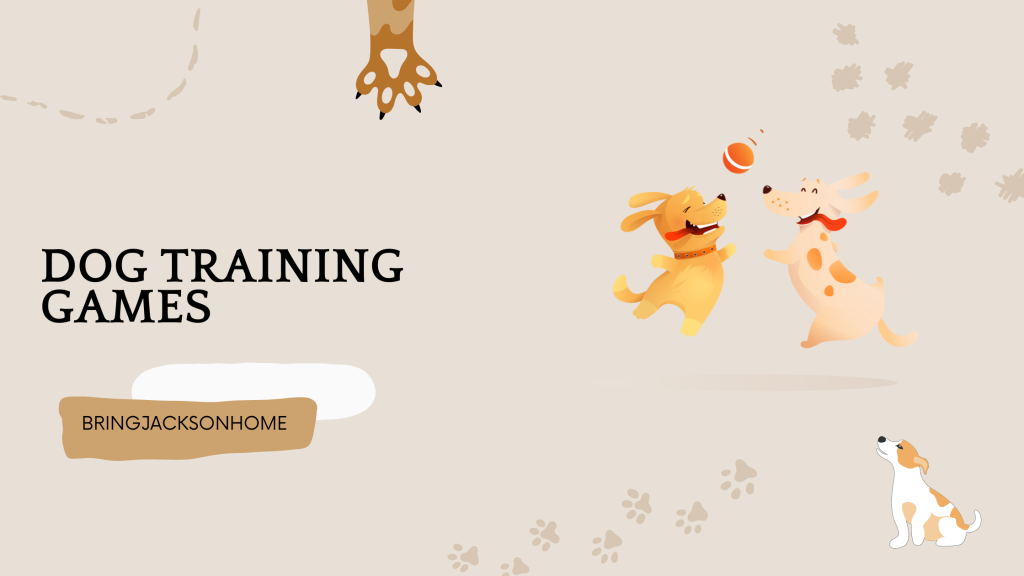This post contains affiliate links, we'll earn compensation if you make a purchase using them at no additional cost to you 😊
Many dog parents stumble upon one question when they cannot find their dog: when to stop looking for a lost dog?
To give you a quick answer, there is no definite advice on it.
However, you should never lose hope and keep trying more ways to find your lost dog.
Plus, you don’t have to worry about which ways are useful in the search because we have covered that one for you.
Hence, to learn more about the ways and probabilities of finding your lost dog, let’s take a look at the details.
When Can You Stop Looking For Your Lost Dog?
The answer to this frequently asked question is not always simple. The fact is that everything depends on the dog’s parents and the decisions they make.
If you have exhausted all possible search strategies and are unsure what to do next, you may lose hope and motivation to look further.
According to researchers, the first day should be spent searching as much as possible before the posters and advertisements start working.
8 best ways to find a lost dog
Losing a pet is a terrible and terrifying experience for any pet owner.
However, it’s crucial to maintain calmness and stick to a set of instructions that will allow you to win back your best pal.
Hence, to do so, follow these guidelines when hunting for a lost dog:
1. Look Nearby Your House
Whether playing with or sniffing anything that catches their attention, dogs occasionally head into locations that are completely unplanned.

Further, look for potential hiding spots for your dog. He might be hidden somewhere, such as in the washing machine, behind some furniture, a bathtub, a flower pot, etc.
2. Start Searching Immediately
When you notice your pet isn’t in the house, you must rush out and get him. According to experts, the initial 12 hours are important.
The likelihood of discovering your pet is greatly reduced beyond that point. Do not let a single second pass. Every second is crucial.
3. Call Out Your Dog’s Name
You can call out his name as usual. He might respond to his name or nickname. Either one is acceptable.
When your pet doesn’t immediately reply, shout as loudly as you can. While searching for a lost dog, people occasionally overlook to do what appears obvious.
4. Spread the word on social media
Post a picture of your missing dog and a convenient way to contact you on social media sites like Facebook groups for your neighborhood or dog shelter pages. Also, inform them if he is a fearful dog or if he is a friendly one.
5. Post flyers in the neighborhood
You can distribute posters with your dog’s name, contact information, and a clear photo in your neighborhood or the location where your dog was last seen. Use big, vibrant, neon-colored paper to make the flyer more noticeable.
6. Take help from the neighbors
This is another possible way to get help to search your dog. You can simply seek help from your neighbors and ask them to join the search party for finding your dog.
This way, you can split into groups and divide areas to cover more distance in the hunting task.
7. Carry Food On The Search
Dogs have an excellent sense of smell, which is something to keep in mind. They won’t hesitate to run your way if they scent their favorite food. Shout his name as you walk while shaking the bag. You Can Carry their Favorite treat by their sense of smell; he will try his best to escape and have his reward.
8. Get Expert Help
It Could be time to get expert help if your preliminary efforts are unsuccessful. Contact a reliable pet detective or a search and rescue group focusing on finding lost animals. These experts have the knowledge to adopt an in-depth search; they use strategies inclusive of scent tracking and putting up gentle traps to effectively catch a dog.
When to Review Your Searching Efforts
As the days and weeks go by, you must review your search efforts regularly. If nothing is found or identified and initial interest in community involvement has faded, it may be time to rethink the search process.
8 Ways to avoid losing a dog!
With these tips, you can take precautions and simply avoid losing your pet dog in the easiest ways possible.
1. Teach Your Pet to Return on your Command
Training your dog isn’t only related to teaching them how to behave well around others or inside the house. It’s also necessary that your dog actively listens to your commands while being completely obedient.
Moreover, the best way to prevent your dog from getting lost is to train them with the command to return on one call.
Training your dog to follow these commands will take some time for you. However, it will make your future tasks involving your dog much easier and worth the time invested.
2. Always keep the leash with you
All pets deserve to go on outings every now and then after spending so much time inside the house or yard. It gives them a feeling of being a part of your family.
However, keeping them out of their leash on an open land might bring risks of the dog getting easily distracted, shifting away from your group, and going lost.
Additionally, ensure that before you unleash your dog in an open space, you give them enough training to be familiar with local areas and walk without leaving your side when unleashed. Your dog should be able to stick to you with their sense of smell.
Having said that, even though your dog gets lost, they can find their way back home independently with your small.
3. Get your pets microchipped
Microchips are a great way to ensure that your dog or cat, with or without tags, is permanently connected to you in the event that they become lost.
By microchipping and registering them with your doctor, you become the animal’s official owner in the eyes of the community.
All they’ll need to do if they become lost and are found is bring your pet to a shelter or nearby veterinarian, who will scan the chip and contact you to plan out to reunite with your dog.
4. Get your ID Tags for your pets
Alongside getting your dog microchipped and attaching a GPS tracking collar on their necks, you can also put ID Tags on your dog collar. This will help the person who finds your dog easily bring them back to you if the ID tag has an address and contact details on it.
You can also get your dog’s ID tags customized or even get the high-tech ones that also help you with additional information about you and your dog.
However, if you’ve no idea how an ID tag should be to be of more use, here are some examples that you need to add to your dog’s ID tag:
- The pet’s name
- Owner’s name
- Your contact number
- Your home address.
5. Pet-Proof your home
The most comfortable place for your pet to be is at home. But, if you neglect to fix the hole in the fence or keep your front door open for an extended period of time, your dog or cat can become interested in what’s outside your property lines.
If you will be leaving the door open for a long time, we advise moving your pet to a designated safe area where they may play while you finish up tasks. A gated area or their crate are good options.
Putting pet gates at your home’s entryway is another method to keep your pets secure.
This keeps your pet safe from harm’s way without giving them the unpleasant impression that they are imprisoned behind a closed door.
6. Get your pets Spayed or Neutered
Having your dogs spayed or neutered can help avoid the loss of animals and overpopulation. Unneutered men can stray from your house for a romantic evening out. Regrettably, a lost pet may result from this as well.
On the other hand, spayed females keep males off your land, where they could cause problems for your family or pets.
Being a dedicated pet parent for the last ten years, I feel one of the most responsible things you can do as a pet owner is to spay or neuter your dog when the time is right. It helps you and your dog maintain the environment and surroundings in your house.
7. Make your dog comfortable with Loud noises
During festivals or special occasions, dogs often feel overwhelmed and anxious due to the loud noise of firecrackers and loud music. It potentially leads them to run away somewhere to a quiet place and get lost away from home.
Therefore, if you have celebrations quite often, train your dog to be comfortable around loud noises like music and firecrackers.
Other than making them used to noises, you can let them reside in a room where they feel safe and comfortable.
Also, if you know someone who likes to have your dog over and your dog is familiar with them, you can drop your dog to this kind of place away from the noise. Additionally, make sure to keep their favorite treats and toys that have your smell with your dog.
8. Keep a technical approach to avoid Pet Loss
Technology like ringing video doorbells, CCTVs, and apps like NextDoor are useful resources to keep track of your dog and prevent them from getting lost.
You can use the NextDoor app to post about your missing dog and review the CCTV footage to find out the direction your dog has gone.
This way, with the help of modern technology, you can easily avoid losing your pet for long hours and get it back before it goes out of reach.
chances of finding the lost dog after 24 hours
According to our research, about 93% of dogs have reunited with their owner, whether with the help of a third person or by finding their own way back home. While the other 7% of dogs never returned home.
So, the chances of finding your lost dog are 93%. Check more details on the chances of finding a dog here.
Where is a lost dog most likely to go?
If your dog is an extrovert and usually goes out of the house to play, they might be looking for their dog friends, familiar people who can comfort them and feed them in your absence.
Most probably, you can find them in a new neighbor’s yard or public parks where they are mostly comfortable.
However, if your dog is introverted, shy, or older, they won’t trust strangers easily and will find a place to keep themselves safe and hide. For example, thick bushes or under cars.
Related read;
Conclusion: You Can Stop Looking For a Lost Dog After a Couple of Weeks
If your dog disappears for any length of time, it can be simple to lose hope.
Furthermore, there is no clear advice on when to stop looking for a lost dog if your dog hasn’t been found.
However, many fortunate dog parents in the same boat have eventually succeeded in getting back together with their beloved dogs.
Do not give up faith because you will be able to find your dog someday, no matter how long it takes—hours, days, weeks, or even months.
FAQs
There’s no set timeline, but it’s wise to keep searching for weeks as long as you have hope of finding your lost dog.
Most missing dogs are typically discovered wandering or following something that first brought them to neighbors’ yards and public parks.
According to our research on lost dog statistics, the majority of missing dogs are found within 30 days.
Yes, lost dogs truly miss and pine for their owners when they are separated.
Yes, dogs can run away at night because it’s darker and more tempting for them to explore.
It depends on the dog’s health, but on average, dogs can run 5 miles.


